You’ve probably never considered how much water flows through your jewelry studio each day, but those seemingly small streams from polishing wheels, ultrasonic cleaners, and stone cutting operations add up faster than you’d expect. While traditional studios can consume hundreds of gallons weekly, forward-thinking artisans are discovering that strategic water management isn’t just environmentally responsible—it’s become essential for reducing operational costs and ensuring long-term sustainability in an industry where every resource matters.
Understanding Water Usage in Metal Cleaning and Polishing
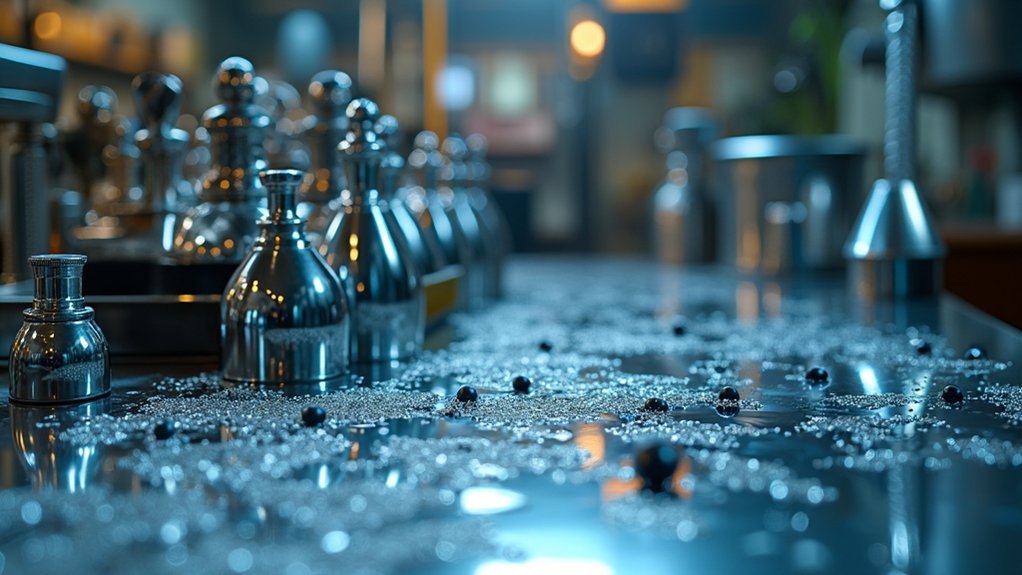
When you’re operating a jewelry studio, water consumption becomes a significant concern during metal cleaning and polishing processes. Your ultrasonic cleaners typically use 1 to 3 gallons per cycle, making water management essential for sustainability and cost control.
Ultrasonic cleaners consume 1-3 gallons per cycle, making efficient water management crucial for jewelry studios focused on sustainability and cost control.
You’ll want to take care when selecting cleaning solutions, as biodegradable options enhance efficiency while protecting the environment.
Water recycling systems allow you to reuse the same water across multiple cleaning cycles, dramatically reducing waste. Installing filtration systems helps treat and purify your cleaning water for extended use.
Regular equipment maintenance prevents leaks and optimizes consumption. Some studios store filtered water in plastic bags for easy transport between stations, ensuring every drop serves its purpose in your metal cleaning operations.
Implementing Closed-Loop Water Systems for Stone Cutting
As you expand your jewelry studio’s sustainability efforts beyond metal cleaning, closed-loop water systems for stone cutting offer exceptional environmental and financial benefits.
These systems dramatically reduce water consumption by up to 90% while maintaining cutting efficiency. You’ll recycle water through filtration, ensuring consistent quality for peak performance.
The system prevents contamination of local water sources by capturing debris and slurries from processing. You’re not just protecting the environment—you’re saving money through reduced water bills and waste disposal fees.
Many jurisdictions provide incentives or rebates for adopting sustainable practices, making your investment even more financially attractive. Installing a closed-loop system positions your studio as environmentally responsible while delivering measurable cost savings that improve your bottom line long-term.
Recycling Rinse Water Through Multi-Stage Filtration
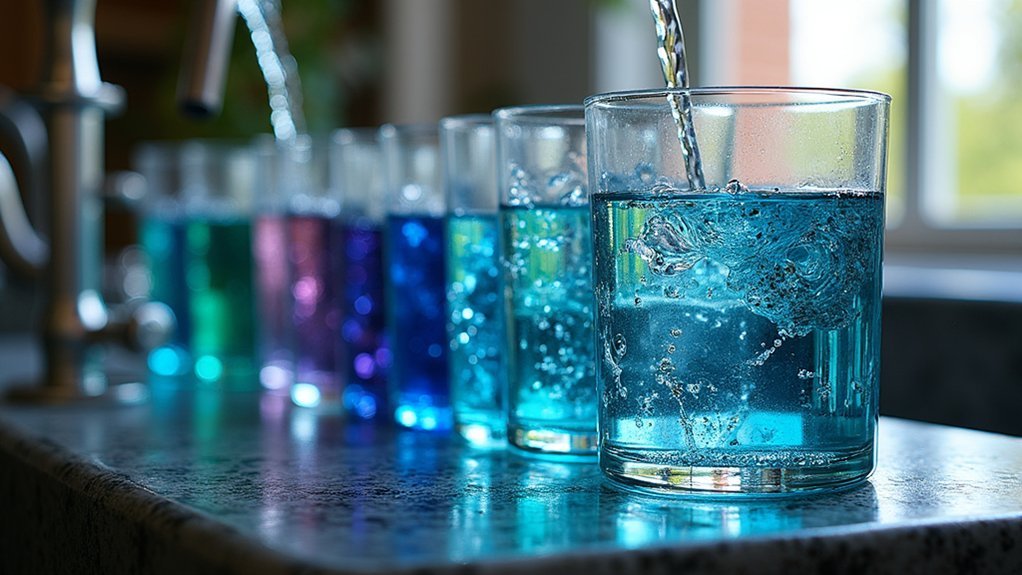
You’ll start your multi-stage filtration system with initial sediment removal to capture larger particles and debris from your rinse water.
Next, you’ll implement a chemical neutralization process that uses activated carbon filters to eliminate odors and chemical residues.
Finally, you’ll complete the cycle with a final polishing stage that removes the smallest contaminants, ensuring your recycled water meets production standards.
Initial Sediment Removal
Since jewelry making processes generate significant amounts of contaminated rinse water, implementing a multi-stage filtration system becomes essential for effective initial sediment removal. You’ll need pre-filters that capture larger debris and particles before water moves to finer filtration stages. This approach protects your equipment from clogging while ensuring cleaner water quality for reuse.
| Filtration Stage | Purpose | Benefits |
|---|---|---|
| Pre-filtration | Captures large debris | Prevents equipment damage |
| Secondary filtration | Removes fine particles | Improves water clarity |
| Final stage | Polishes water quality | Enables safe reuse |
Chemical Neutralization Process
After removing initial sediments, your rinse water still contains dissolved chemicals and heavy metals that require neutralization before safe disposal or reuse.
You’ll need to treat this water with specific agents that balance pH levels, rendering harmful substances safe for the environment.
The chemical neutralization process targets acidic or alkaline compounds commonly found in jewelry manufacturing solutions.
You’ll add neutralizing agents like sodium hydroxide for acidic water or sulfuric acid for alkaline conditions, carefully monitoring pH levels throughout treatment.
This process prepares your rinse water for advanced filtration stages while ensuring compliance with environmental regulations.
You’re creating a foundation for effective recycling that can reduce your studio’s fresh water usage by up to 80%, making this neutralization step essential for sustainable jewelry production.
Final Polishing Stage
Once your rinse water has undergone neutralization, implementing a multi-stage filtration system transforms contaminated water into a reusable resource while capturing valuable precious metals.
This system combines sediment filtration, activated carbon, and reverse osmosis to purify water and reclaim gold and silver particles that would otherwise be lost.
You’ll reduce water waste by up to 90%, dramatically cutting environmental impact and operational costs.
The filtration process guarantees you’re not sending precious metals down the drain while creating clean water for future polishing operations.
Regular maintenance and monitoring keep your system performing efficiently and prevent contamination.
Capturing and Reusing Steam Condensation From Soldering
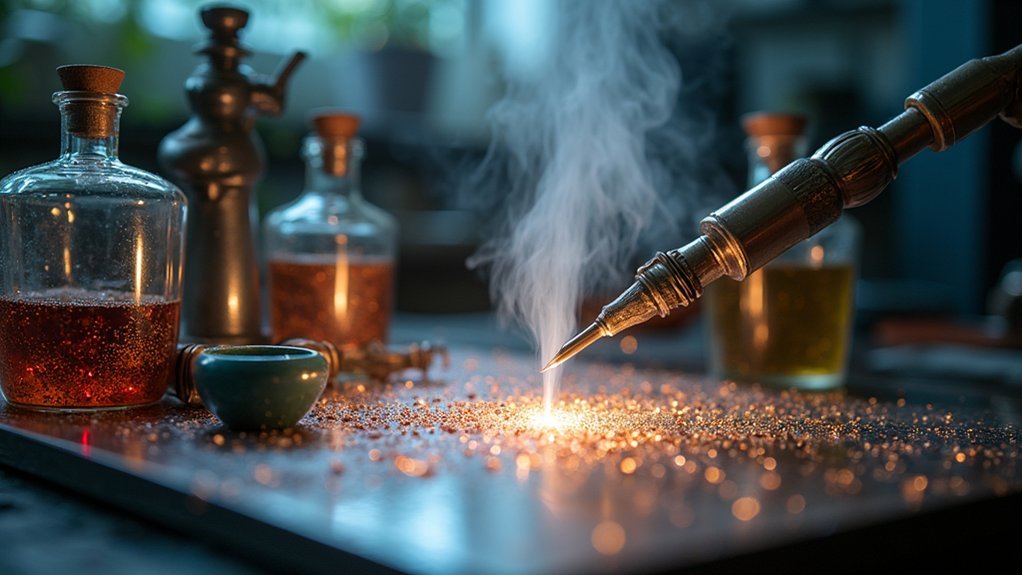
You’ll need to install a steam capture setup that channels vapor from your soldering area directly into a collection reservoir.
Your condensation recovery methods should include cooling coils or condensation chambers that efficiently convert steam back to liquid form.
This system captures valuable water that you’d otherwise lose while reducing humidity levels in your workspace.
Steam Capture Setup
Steam generated during soldering operations creates both environmental challenges and overlooked opportunities in jewelry studios.
You’ll need a condensation collector system that captures this moisture before it affects your workspace. The setup connects a sealed container directly to your soldering station, channeling steam where it condenses into reusable water.
Your steam capture system delivers multiple benefits:
- Reduces workspace humidity – preventing tool rust and improving comfort
- Captures clean water – perfect for diluting cleaning solutions or watering plants
- Protects equipment – keeps moisture away from sensitive materials
- Requires minimal maintenance – just regular cleaning to prevent blockages
You’ll maximize efficiency by positioning the collection container below your soldering area, ensuring gravity assists the condensation process while maintaining easy access for emptying.
Condensation Recovery Methods
Building on your basic steam capture setup, effective condensation recovery transforms collected moisture into a valuable studio resource through strategic collection and purification methods.
You’ll need specialized condensate collection systems integrated directly into your soldering station to efficiently gather moisture from steam production. These systems can reduce your studio’s water consumption by up to 50%, considerably cutting costs while supporting environmental conservation.
Proper insulation and drainage systems are essential for contamination-free collection. You’ll want to make sure collected water remains pure for reuse in cleaning metals or cooling applications.
This recovery process also helps maintain ideal humidity levels in your workspace, benefiting sensitive materials and tools. By implementing these targeted steam capture techniques, you’re creating a sustainable cycle that maximizes resource efficiency throughout your jewelry-making processes.
Installing Water-Efficient Equipment for Tumbling Operations
When you’re ready to upgrade your jewelry studio’s tumbling operations, installing water-efficient equipment stands as one of the most impactful changes you can make for both your bottom line and environmental footprint.
Modern water-efficient tumblers can slash your water usage by up to 50% while maintaining exceptional polishing quality. These high-efficiency systems deliver the same results in less time using fewer resources.
Consider these key upgrades:
- Closed-loop systems that recirculate water, requiring only minimal fresh water replenishment
- Automatic shut-off features that prevent overuse and encourage mindful consumption
- High-efficiency tumblers designed for peak performance with reduced water requirements
- Regular maintenance schedules to address leaks and guarantee peak operational efficiency
You’ll achieve superior polishing results while dramatically reducing your studio’s environmental impact.
Creating Collection Systems for Ultrasonic Cleaner Solutions
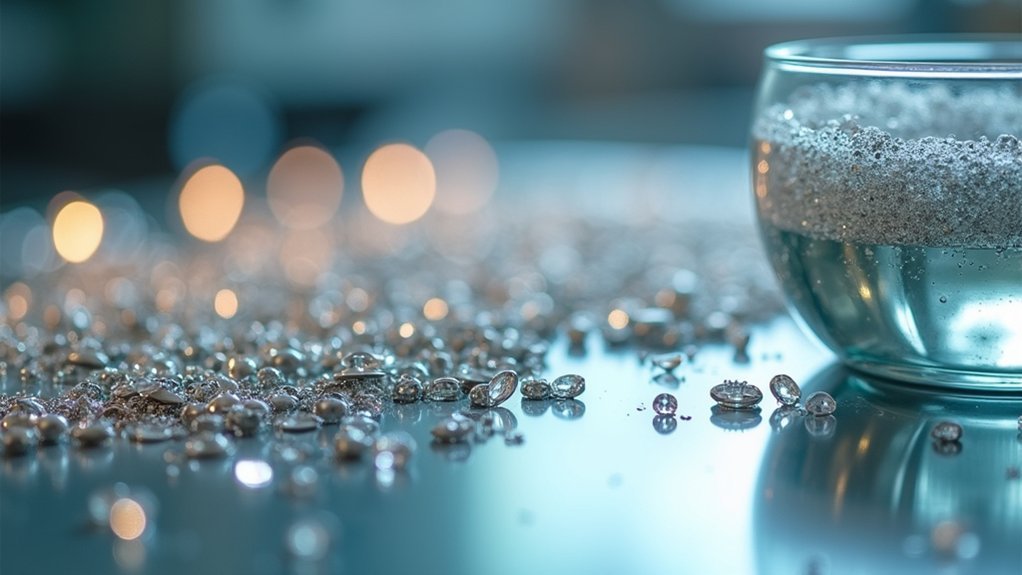
While your ultrasonic cleaner removes tarnish and grime from precious metals, you’re likely pouring valuable cleaning solutions down the drain after each use.
You can dramatically reduce waste by establishing a dedicated collection system that captures and reuses these solutions.
Set up labeled containers to store used solutions separately, making it easier to track usage and determine replacement timing.
Install a filtration system within your cleaner to extend solution life by removing debris and particles. This simple addition can double or triple your solution’s effectiveness period.
Monitor your solution’s cleaning power through visual inspections and periodic testing.
When effectiveness diminishes, dispose of used solutions according to local environmental regulations.
Train your staff on proper disposal methods to guarantee environmental compliance while maximizing every drop’s value.
Monitoring and Measuring Daily Water Consumption Patterns
Understanding where and when your studio uses the most water transforms conservation from guesswork into strategic action. By implementing a tracking system, you’ll discover specific tasks that consume excessive water and can reduce consumption by 20-30%.
Transform your jewelry studio’s water conservation from random guessing into strategic, data-driven action that delivers measurable results.
Flow meters provide precise, real-time measurements that reveal your studio’s consumption patterns. Here’s what effective monitoring includes:
- Installing flow meters on major water outlets to track usage by station
- Recording daily consumption data during different jewelry-making processes
- Identifying peak usage times and water-intensive tasks
- Comparing weekly and monthly trends to spot inefficiencies
Regular data review encourages sustainable practices like recycling cleaning water.
When you educate your staff about consumption patterns, they’ll develop mindful habits that compound your conservation efforts, making every drop count.
Frequently Asked Questions
What Happens to Unsold Jewelry?
When you can’t sell jewelry, you’ll repurpose materials, redesign pieces, organize seasonal collections, donate to charities, keep inventory for future trends, or sell at discounted prices through online platforms and clearance events.
How Do I Keep My Jewelry From Falling Off?
You’ll prevent jewelry from falling off by using sticky cards with double-sided tape for gemstones, storing small components in compartmentalized boxes, and keeping your workspace organized with everything within easy reach.
Are Jewelry Sales Declining?
You’re seeing mixed trends in jewelry sales. Traditional retail’s declined 1.5% annually, hit hard by COVID-19 and shifting preferences toward experiences. However, online sales are surging, representing over 25% of total jewelry sales.
How Much Does the Average Jewelry Store Make?
You’ll typically see annual revenues between $200,000 and $1 million at average jewelry stores. Your profit margins can reach 40-60%, with markups ranging from 100-300% on individual pieces you’re selling.
In Summary
You’ve got the tools to transform your jewelry studio into a water-saving powerhouse. By implementing closed-loop systems, multi-stage filtration, and steam capture methods, you’ll drastically cut consumption while maintaining quality. Don’t forget to monitor your daily usage patterns and train your team on conservation practices. These changes won’t just reduce your environmental impact—they’ll also lower your utility costs and position your studio as a leader in sustainable jewelry production.

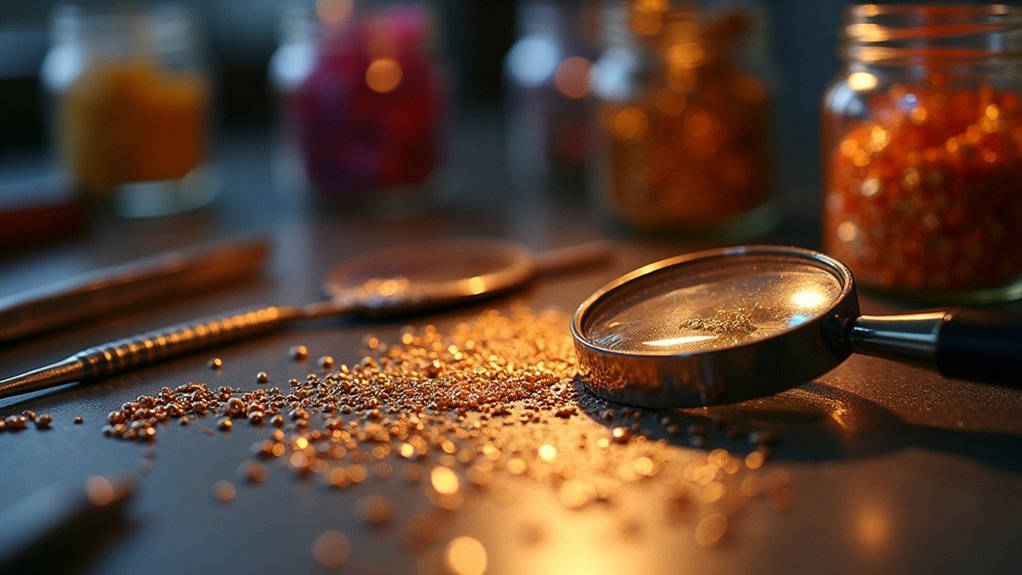



Leave a Reply